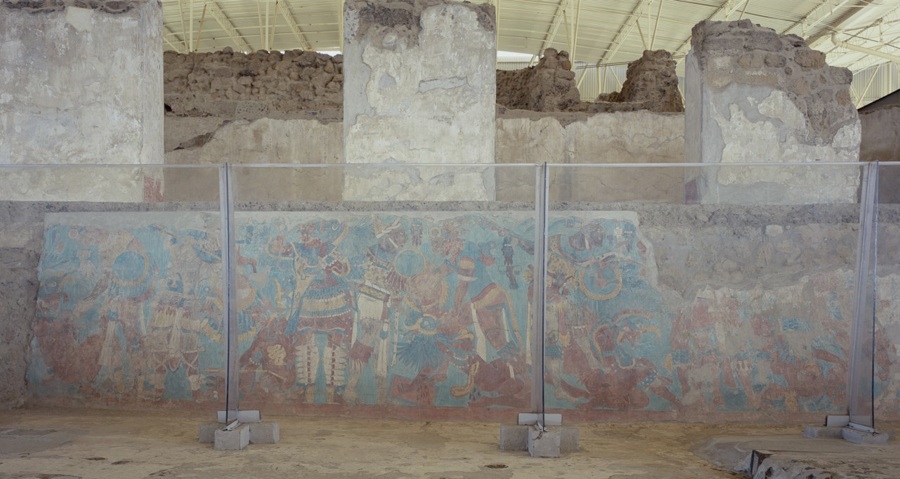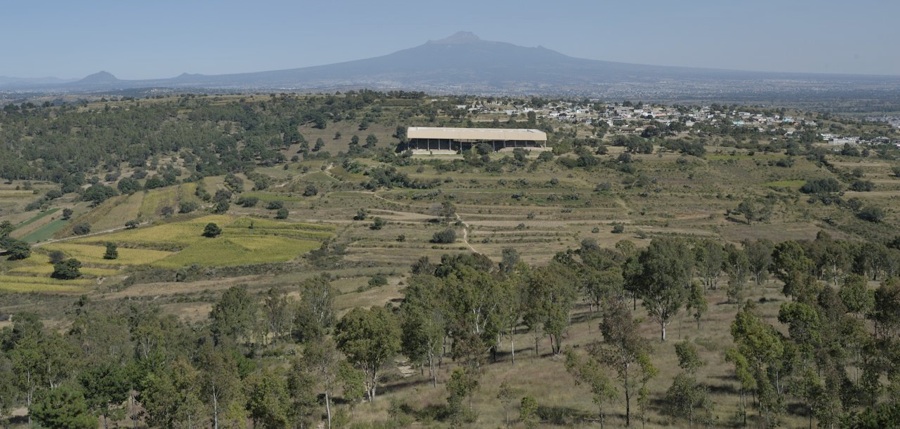The day after visiting Cholula, Enrique and I visited Cacaxtla. Cacaxtla is unique in the Mexican Central Highlands in having column and wall murals with bright blue colors characteristic of the Mayan murals like at Bonampak. These murals are the highlight of this site. Cacaxtla is a small site, comprising 1 main temple and several small pyramids. The human sacrifice that the inhabitants practiced turned me off to most of the site. However, I found the murals fascinating.
According to the INAH Plaque accompanying this site, the Olmeca-Xicalancas inhabited Cacaxtla last. The Olmeca-Xicalancas controlled the Puebla-Tlaxcala Valley’s central, southern, and western parts. They occupied a strategic position on the trade route between the Mexican Central Highlands and the Gulf Coast. Cacaxtla reached its peak circa 700-900 A.D., following Teotihuacan’s decline, while other cities such as El Tajin in Veracruz and Xochicalco in Morelos consolidated their power.
According to the LONELY PLANET Guide to Mexico, 9th Edition, published September 2004, ISBN 1-74059-686-2, Pages 198-200, archaeologists determined that the inhabitants primarily used Cacaxtla as living quarters for the ruling class. The inhabitants of Cacaxtla practiced human sacrifice; archaeologists have found the skeletal remains of more than 200 mutilated children at Cacaxtla.



